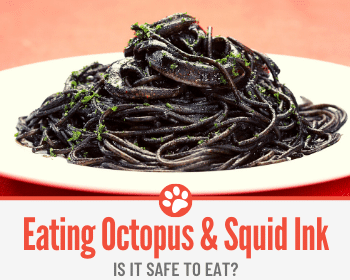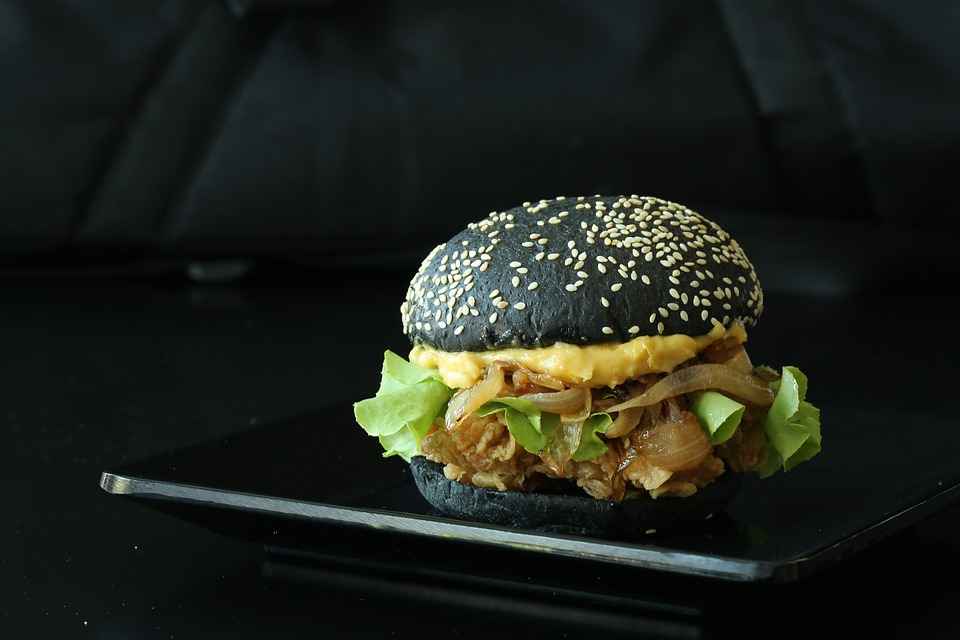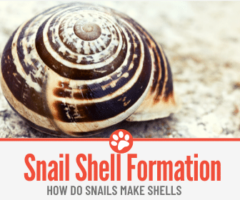 I am sure you have heard about the famous Japanese black burgers, they are a big attraction to tourists in Japan.
I am sure you have heard about the famous Japanese black burgers, they are a big attraction to tourists in Japan.
When I checked the ingredients of those burgers, I discovered the ingredient that makes them black is squid ink.
They claim burgers are completely safe to eat, but I did some research to find out if squid and octopus ink is actually safe to eat.
So, Can you Eat Octopus and Squid ink?
Yes you can safely eat Squid Ink and Octopus ink, squid ink is a very popular ingredient in Mediterranean and Japanese cuisine. Studies show that squid and octopus ink is completely safe to consume, there are no harmful effects, only benefits which we will discuss in this article.
Octopus and squid inks are used in many recipes all over the world and they have many health benefits. If you ever wanted to try something that contains squid or octopus ink but are worried about the taste, you can relax because it only brings richness to the dish and doesn’t change the taste at all.
Is Octopus Ink Edible Or Is It Poisonous?
While all octopuses have a venomous bite and a venom gland, the venom and the ink are two different things. No studies have shown that octopus ink is poisonous for humans, but it can be poisonous for the octopus himself if he releases it in a small space.
Octopus ink is often consumed by humans, and like squid ink for various things as well including food, art, medicine, writing. Octopus Ink is also consumed by octopus’ natural predators.
Is It Safe To Eat Octopus Ink , Can it Kill you?
Although an octopus can kill a human with one bite, octopus ink is safe and will not kill you. Octopus ink is completely safe to eat, as I wrote above it is often used by humans and other animals as food. The ink has many health benefits and can be eaten in large quantities without consequences.
Is Squid Ink Edible Or Is It Poisonous?
Squid ink is a dark ink produced by squid. It is squid’s defense mechanism, helping him escape from predators by blocking their view. It contains compounds like melanin, amino acids, lead, copper, and other compounds beneficial for human health, so it’s definitely not poisonous.
Humans have used squid ink for centuries, in writing, art, medicine, and food. It’s very popular in Mediterranean and Japanese cuisine. Italians use it in mostly in pasta, because it adds a specific flavor and interesting color. Japanese black burgers are a big attraction in Japan, the main ingredient is squid ink.
Is It Safe To Eat Squid Ink
Like octopus ink, squid ink is also safe to eat and is used by humans for centuries. Squid ink contains melanin, enzymes, cadmium, lead, copper, glutamine, leucine, alanine, and aspartic acid none of which are toxic to humans.
Squid ink is used in many cuisines around the world as a natural food coloring. It is the most popular in Japan, Italia, Greece, and Spain. Squid ink is used in many food items such as pasta noodles, black burgers, risotto, seafood tacos, black rice, tempura, and korokke.

What Does Octopus Ink Taste Like?
The taste of octopus ink is best described as the taste of the sea. It is a taste of fresh clean fish with ocean flavor. Octopus ink has little to no taste, almost neutral taste. When used in pasta, the ink doesn’t change the taste, it only gives pasta more richness on top of providing beautiful color for your pasta. That’s why it is not used for its subtle flavor but for the appearance it gives to the dish.
Where Does Octopus Ink Come From And What Is Octopus Ink?
Octopus ink is a defense mechanism, used by the octopus to confuse its predators. It is the combination of secretions from two secretory organs. One organ creates mucus and the other creates melanin. Mucus is a slippery aqueous secretion and affects the thickness of the ink. Melanin gives the ink its dark color.
The ink is released from the ink sac and accompanied by water from siphons, which are openings through which they shoot water and bodily waste.
What Is Squid Ink Made Of?
Squid Ink is made from pigment melanin, mucus, and other things such as amino acids, metals. Squid ink is dark blue color while octopus ink is black in color.
To produce ink, squids have special organs called ink sacs and ink gland. Ink is constantly made by the ink gland, when the gland is full it empties into an ink sac. The ink sac is used for storage and is connected to the intestine. The intestine is connected with a siphon, which is used to shoot water for swimming.
When a squid wants to release its ink, it squeezes the ink sac, ink then flows to the siphon, where it is mixed with water. Squid then shoots this liquid called squid ink to confuse his predator and get away safely.
Can You Be Allergic To Squid Ink?
People allergic to shellfish may experience some symptoms when eating squid ink, but these symptoms are really mild. If you have any type of allergy to shellfish, it’s better to be cautious and avoid any meal that contains squid ink.
Is Squid Ink Good For You & Benefits Of Eating Squid Ink
Squid ink is associated with many potential health benefits for humans. Some of them are:
- Antioxidant effects
- Antimicrobial effects
- Anticancer effects
Antioxidants are synthesis that fights harmful molecules knows as free radicals. If those molecules level become too high they can cause very serious cellular damage, increasing a chance for cancer, illness, diabetes.
Squid ink contains antioxidant properties that come from carbohydrate molecules polysaccharides, they are able to protect cells from free radicals.
Studies have shown that squid ink has antimicrobial effects, which can neutralize harmful bacteria and viruses. One study found that squid ink extract was great at neutralizing bacteria that cause dental plaques and foodborne illnesses such as Escherichia Coli.
There is evidence suggesting that squid ink can reduce tumor sizes as well for cancer patients. Its anticancer properties are linked with antioxidant properties, which can stop cancer cells from spreading. Studies have found that polysaccharides in squid ink may stop the growth of lung, prostate, and breast cancer.
They can also protect against damage from chemotherapy. These are all promising studies but more research is needed to prove it.
Squid ink is used to improve blood pressure. Compounds in squid ink may help blood vessels expand, which improves blood flow and blood pressure. It was used in Chinese medicine to treat heart and blood issues.
Related Questions
Can an octopus survive in its own ink? Octopus ink is very thick because it is made of mucus. Thickness is essential for the ink to retain its shape in the water, so the octopus has time to flee and escape from his predator. An octopus can change the thickness of their ink to be very dense or very thin.
When octopus are caught and transported they are usually placed in small ”holding cells” which might be fatal for the octopus as it stresses the octopus. If the octopus is stressed out, he’ll squirt ink into the water, water will become so thick making it impossible for the octopus to breathe.
How is squid ink harvested? The use of squid ink nowadays is generally limited to cooking, it is used as a food coloring and flavouring. For the squid ink to be harvested, squid first needs to be caught and killed. The ink sac is then detached from the body and squeezed into a container. This ink doesn’t contain any mucus because it was extracted from the ink sac.
Is octopus ink poop? Octopuses expel ink from the openings through which they shoot water and bodily waste. So it is not exactly a poop, but it does emerge from the opening that could be considered its anus.






